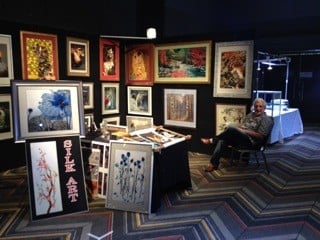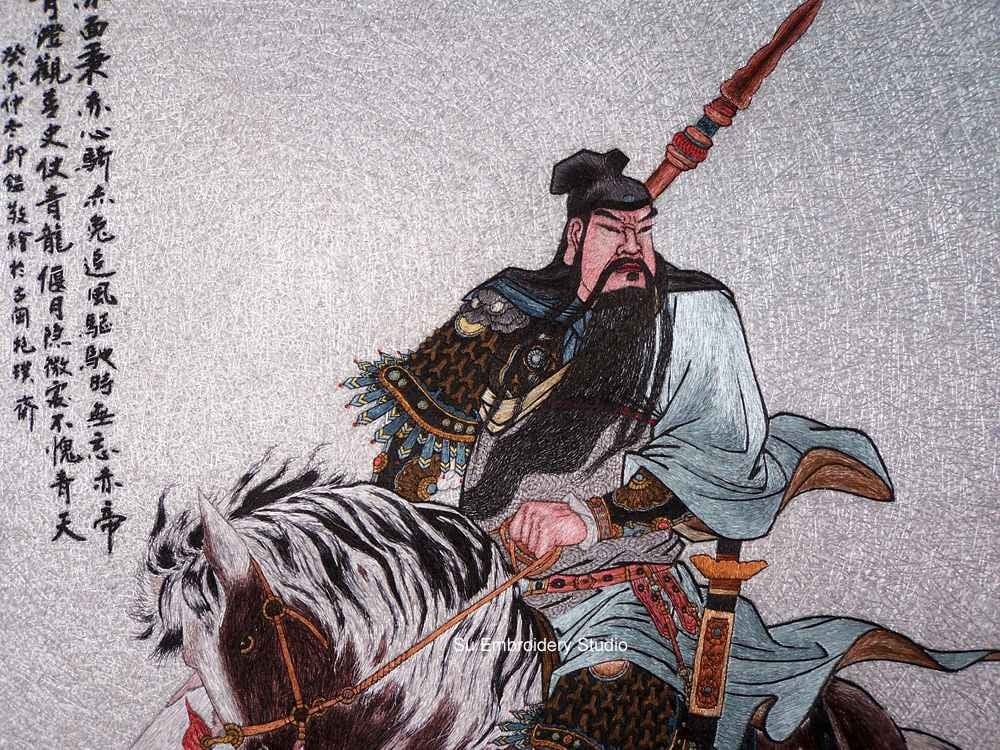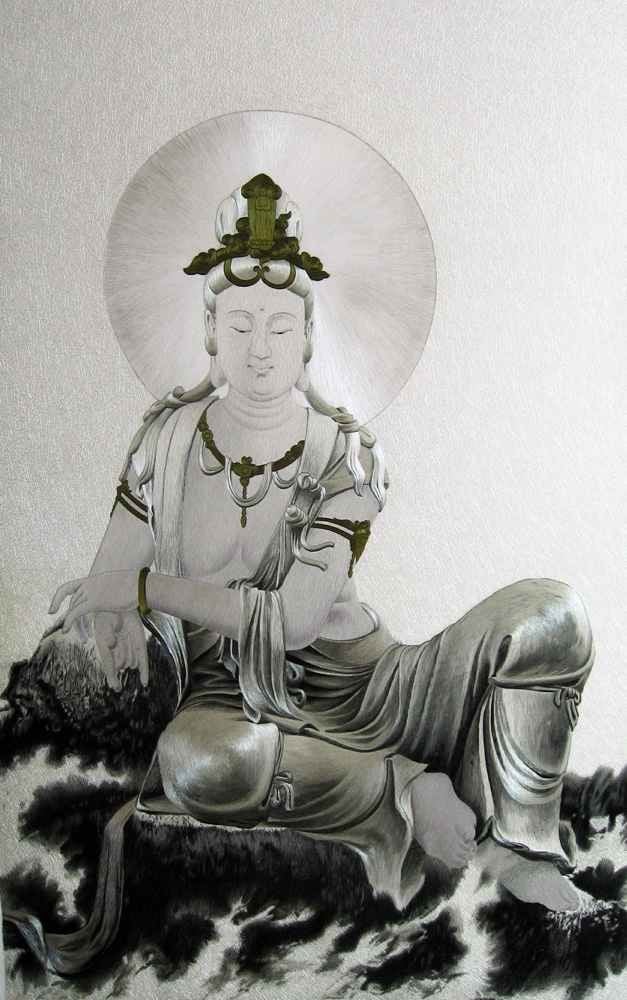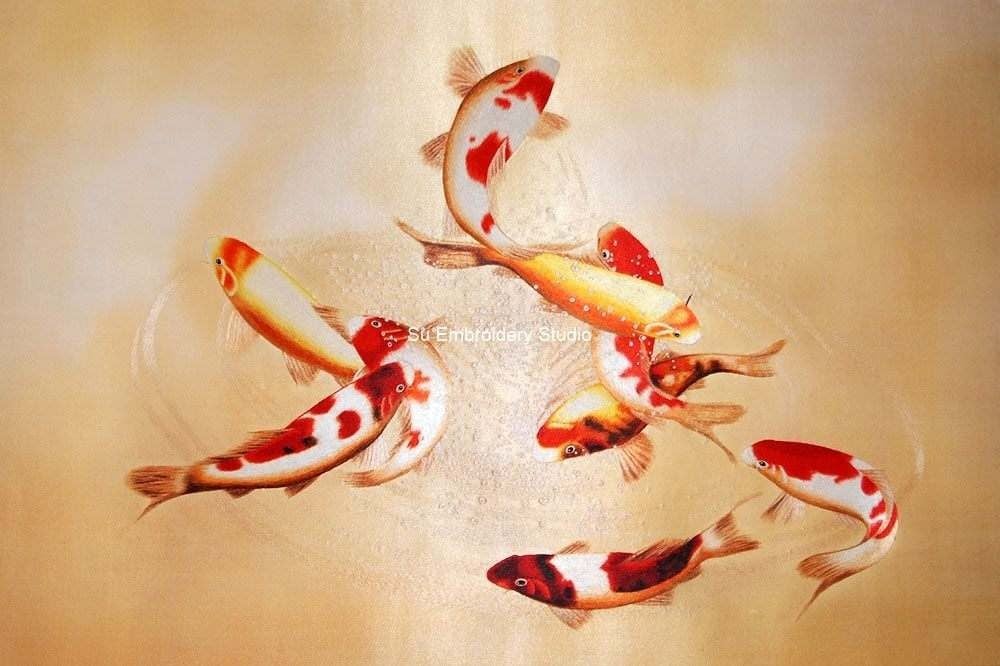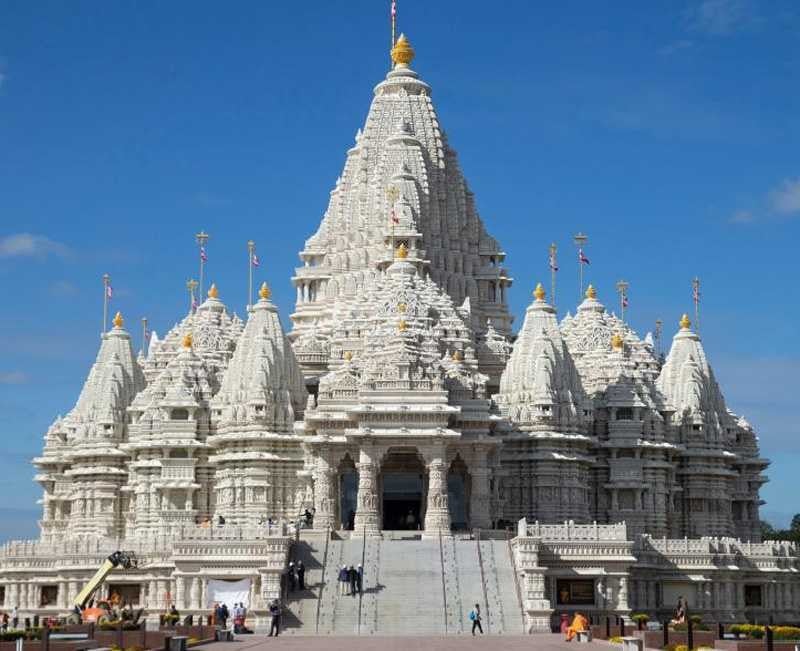Chinese embroidery, with its rich history spanning thousands of years, stands as a testament to the country's enduring artistic legacy and cultural heritage. Renowned for its exquisite craftsmanship and intricate designs, Chinese embroidery has captivated audiences around the world with its unparalleled beauty and sophistication. At the heart of Chinese embroidery lies silk thread, celebrated for its lustrous sheen, soft texture, and vibrant colors. For centuries, silk embroidery has been synonymous with luxury, refinement, and artistic expression in China, adorning garments, textiles, and artworks with intricate motifs and patterns.
However, beyond silk thread embroidery, Chinese artisans have explored some other materials as mediums, each offering its own unique textures, colors, and effects. These alternative mediums, ranging from cotton threads to gold and metallic threads, wool threads, synthetic threads, and even hair, add depth and dimension to the rich tapestry of Chinese embroidery traditions. In this article, we delve into some of the notable alternative materials used in Chinese hand embroidery besides silk embroidery, exploring their cultural significance, artistic possibilities, and contemporary relevance. Join us on a journey through the diverse world of Chinese embroidery as we uncover the hidden treasures of its alternative mediums and celebrate the ingenuity and creativity of its artisans.
1. Silk Threads:
Silk threads hold a revered status in Chinese embroidery, prized for their natural luster, smooth texture, and vibrant colors. With a history dating back over 5,000 years, silk embroidery has been synonymous with luxury, refinement, and cultural heritage in China. Silk threads are meticulously stitched onto fabrics, creating intricate patterns and motifs that captivate the eye and elevate the overall aesthetic of the piece. While silk embroidery continues to be a cornerstone of Chinese textile arts, artisans have also embraced alternative materials to explore new creative possibilities and expand the boundaries of traditional embroidery techniques.
Silk Threads Used in Chinese Embroidery
We expand this topic ‘silk threads in Chinese embroidery’ in another article, Why Silk Thread is the Main Medium for Chinese Embroidery, as the article will be too long if we discuss it in details. In this article, we will mainly talk about the other mediums that are often ignored when people learn about Chinese embroidery art.
2. Cotton Threads:
Cotton thread embroidery serves as a vital alternative to silk embroidery, particularly in regions where silk may be less accessible or affordable. This type of embroidery flourishes in various folk art traditions and everyday textile crafts across China, offering artisans a versatile medium with which to express their creativity. Unlike silk embroidery, which exudes a luxurious sheen and softness, cotton thread embroidery boasts a more rustic and matte appearance, lending itself well to traditional and rustic designs.
One notable example of cotton thread embroidery is found in the ethnic minority communities of southwestern China, such as the Miao and Dong ethnic groups. These communities are known for their vibrant textile traditions, where cotton thread embroidery plays a central role in clothing, accessories, and household items. Intricately embroidered garments, adorned with geometric patterns, floral motifs, and symbolic motifs, serve as a reflection of cultural identity and craftsmanship.
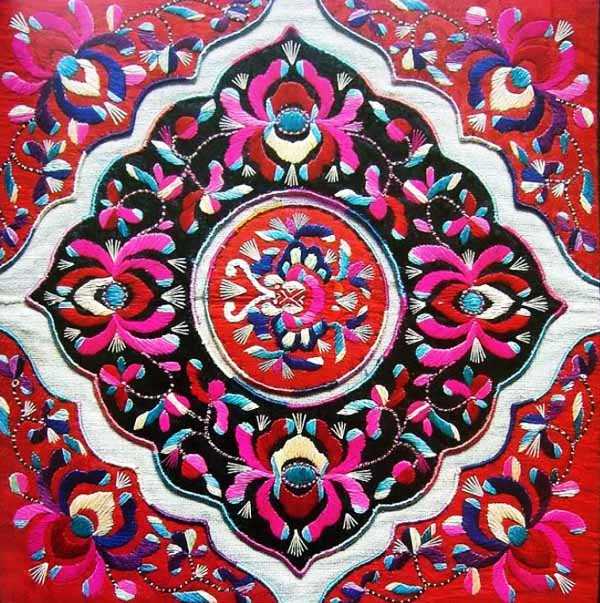
Chinese Ethnic Minority Miao Embroidery
In addition to ethnic minority communities, cotton thread embroidery is also prevalent in rural villages and agricultural regions, where it is used to embellish everyday items such as tablecloths, pillowcases, and curtains. In these settings, cotton thread embroidery serves both functional and decorative purposes, adding a touch of color and artistry to the mundane aspects of daily life.
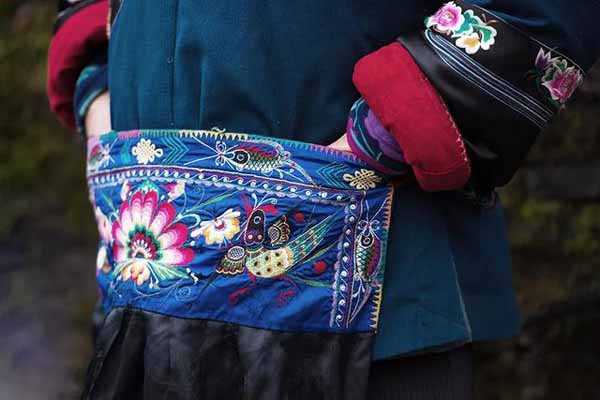
Miao Embroidery on Traditional Costumes
Cotton thread embroidery has found its way into contemporary fashion and design, with designers and artisans incorporating it into clothing collections, home decor products, and art installations. Its affordability, durability, and eco-friendliness make it an attractive choice for sustainable fashion brands and eco-conscious consumers looking for ethically sourced and produced textiles.
Overall, cotton thread embroidery represents a rich and diverse tradition within Chinese embroidery, showcasing the ingenuity and resourcefulness of artisans who harness the potential of this humble material to create beauty and meaning in their work. From traditional ethnic costumes to modern fashion trends, cotton thread embroidery continues to evolve and thrive, enriching China's cultural landscape with its timeless allure and artistic expression.
3. Gold and Metallic Threads:
Gold and metallic threads hold a special place in the realm of Chinese embroidery, revered for their dazzling luster and ornate beauty. These threads, often crafted with precious metals or metallic alloys, are prized for their ability to infuse garments, accessories, and ceremonial items with an aura of luxury and opulence. Goldwork embroidery, as it is commonly known, is a time-honored tradition that dates back centuries, symbolizing wealth, status, and cultural refinement.
Gold Thread Thread Embroidery 'Dragon'
In Chinese embroidery, gold and metallic threads are meticulously stitched onto fabrics, creating intricate patterns and motifs that captivate the eye and elevate the overall aesthetic of the piece. Artisans employ a variety of techniques, including couching, padding, and satin stitching, to achieve depth, texture, and dimension in their designs. The reflective quality of the metallic threads adds an element of dynamism and movement, as they catch and reflect light, creating a mesmerizing visual effect.
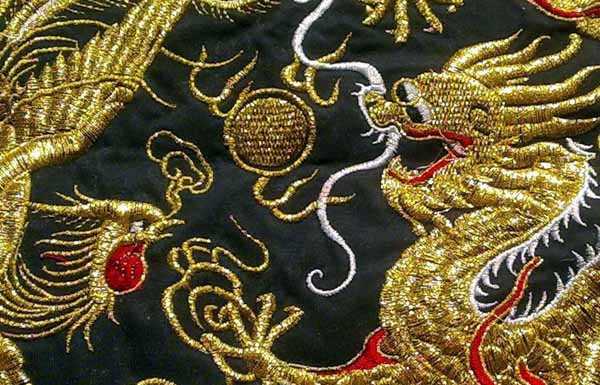
Gold Thread Embroidery 'Phoenix and Dragon'
Goldwork embroidery is often associated with ceremonial attire, such as imperial robes, court garments, and religious vestments. These lavish garments, embellished with gold and metallic threads, serve as a tangible symbol of power, prestige, and divine favor, reflecting the wearer's elevated status and connection to the divine. In addition to ceremonial attire, goldwork embroidery is also used to adorn accessories such as purses, shoes, and fans, as well as decorative items like wall hangings, tapestries, and banners.
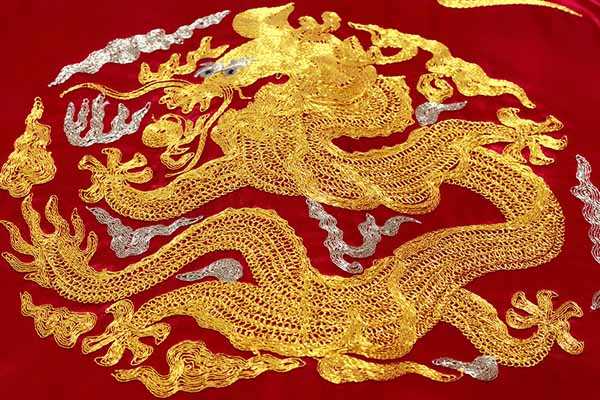
Gold Thread Embroidery Work 'Dragon' on Garment
Furthermore, gold and metallic threads play a prominent role in Chinese traditional opera costumes, where they are used to accentuate elaborate headdresses, elaborate robes, and dramatic accessories. These intricately embroidered costumes transport audiences to a bygone era of splendor and grandeur, where every stitch tells a story of tradition, craftsmanship, and artistic excellence.
Silk Embroidery Work Mixed with Gold Thread Embroidery, Designed by Su Embroidery Studio
In contemporary Chinese embroidery, goldwork techniques continue to evolve and adapt to modern tastes and trends. Designers and artisans experiment with new materials, textures, and motifs, pushing the boundaries of traditional embroidery while preserving its timeless allure and cultural significance. Whether showcased on the runway, displayed in museums, or worn for special occasions, goldwork embroidery continues to shine as a shining example of China's rich cultural heritage and craftsmanship.
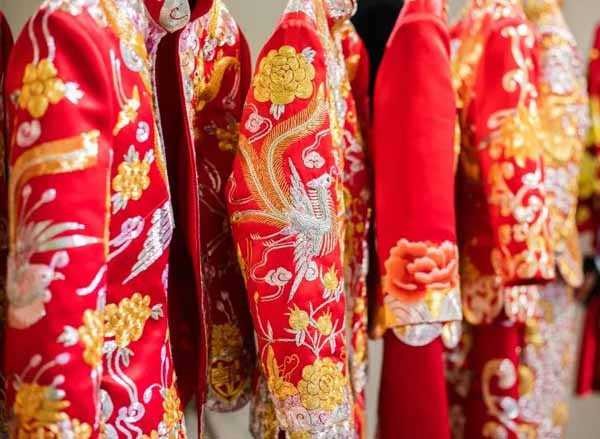
Gold Thread Hand Embroidered Wedding Suits
Gold embroidery wedding suits and dresses have become increasingly popular choices for modern brides and grooms seeking to infuse their special day with timeless elegance and luxury.
4. Wool Threads:
While silk embroidery reigns supreme in Chinese embroidery traditions, wool thread embroidery holds its own niche, particularly in regions where sheep farming is prevalent, such as the northern provinces of China. Unlike silk, wool thread embroidery offers distinct qualities of warmth and durability, making it a preferred medium for creating decorative items like tapestries, rugs, and wall hangings.
Wool thread embroidery, although less widespread than silk embroidery, boasts a unique charm and character that appeal to artisans and enthusiasts alike. Its distinctive texture and resilience lend themselves well to creating pieces that are not only visually striking but also practical and long-lasting. Moreover, wool's ability to retain vibrant colors makes it ideal for expressing bold and vivid designs, adding a dynamic element to the artwork.
In regions where wool thread embroidery thrives, artisans draw inspiration from traditional nomadic cultures, infusing their designs with motifs and patterns that reflect the rich heritage of the region. Geometric shapes, stylized flora and fauna, and intricate border designs are common themes in wool thread embroidery, echoing the artistic traditions of ancient nomadic tribes and pastoral communities.
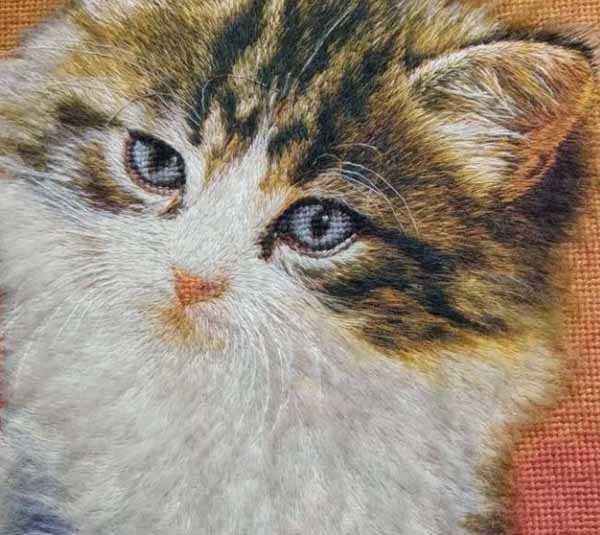
Wool Thread Embroidery 'Kitten'
Despite its niche status, wool thread embroidery continues to be celebrated for its cultural significance and artistic merit. Artisans take pride in preserving and promoting this time-honored craft, passing down techniques and designs from generation to generation. Through their work, they pay homage to the enduring legacy of wool thread embroidery and its role in shaping the cultural identity of their communities.
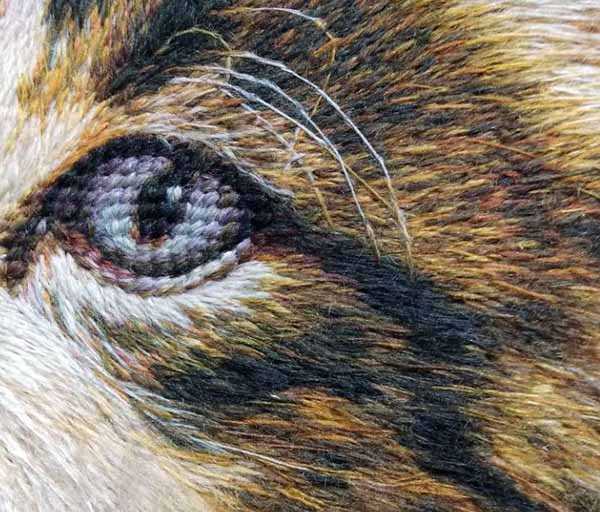
Closeup of Wool Thread Embroidery Work
While silk embroidery may take center stage in the realm of Chinese embroidery, wool thread embroidery offers a captivating alternative that highlights the diversity and richness of China's textile traditions. With its unique aesthetic and cultural heritage, wool thread embroidery remains a cherished art form that continues to captivate and inspire audiences around the world.
5. Synthetic Threads:
As textile technology continues to advance, synthetic threads have emerged as a popular choice, particularly in machine embroidery applications within modern Chinese embroidery practices. These threads, crafted from materials like polyester or nylon, offer several advantages, including enhanced durability and colorfastness.
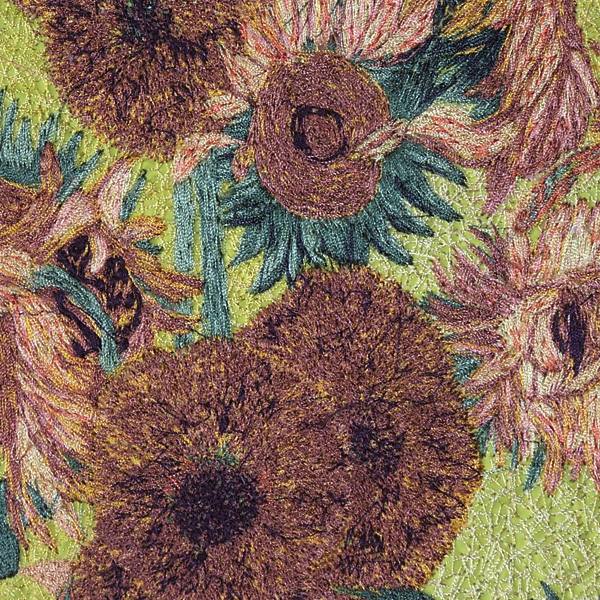
Machine Embroidery Made with Synthetic Threads
Synthetic thread embroidery has found favor in various applications, ranging from commercial purposes to contemporary art projects. Its resilience and resistance to fading make it particularly well-suited for machine embroidery, where longevity and consistent color quality are essential. Moreover, the availability of synthetic threads in a wide range of colors allows artisans to unleash their creativity and experiment with bold, eye-catching designs that may not be achievable with natural fibers alone.
In addition to its practical benefits, synthetic thread embroidery also presents exciting opportunities for innovation and experimentation in the realm of contemporary art. Artists and designers are increasingly incorporating synthetic threads into their work to explore new textures, effects, and aesthetic possibilities. Whether used in mixed-media installations, textile sculptures, or avant-garde fashion pieces, synthetic thread embroidery offers a versatile medium for pushing the boundaries of traditional embroidery techniques and creating bold, visually striking compositions.
While synthetic thread embroidery may not possess the same historical or cultural significance as silk or wool thread embroidery, its versatility and accessibility make it an invaluable addition to the modern embroiderer's toolkit. As technology continues to evolve, synthetic threads are likely to remain a popular choice for machine embroidery applications, offering embroiderers a reliable and durable alternative to natural fibers.
For more photos of machine embroideries made with synthetic threads, please read article 'How to Tell Chinese Silk Embroidery from Machine Embroidery'
6. Hair:
Hair embroidery, also referred to as "faux hair embroidery" or "toufa embroidery," emerges as a distinctive facet of Chinese embroidery, boasting a rich history and exquisite craftsmanship. Originating in the Qing Dynasty and predominantly practiced by the Manchu ethnic group, this traditional art form has continued to captivate audiences with its unique medium and stunning visual effects.
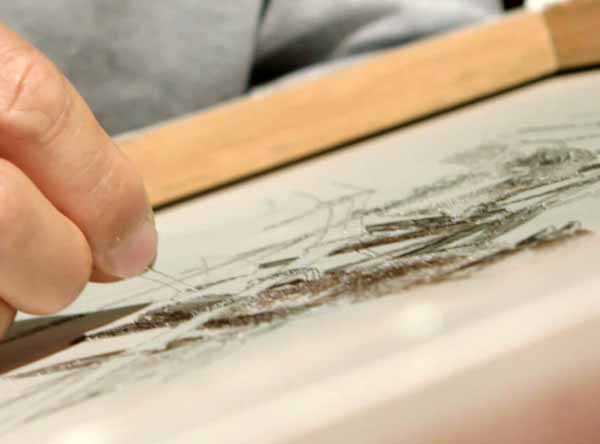
Chinese Hair Embroidery
At the heart of hair embroidery lies the use of human or animal hair as the principal medium, showcasing the ingenuity of artisans who transform ordinary strands into extraordinary works of art. Meticulously stitched onto fabric, these hair strands are arranged with precision to form intricate images, motifs, and patterns, resulting in embroidery pieces that exude elegance and sophistication.
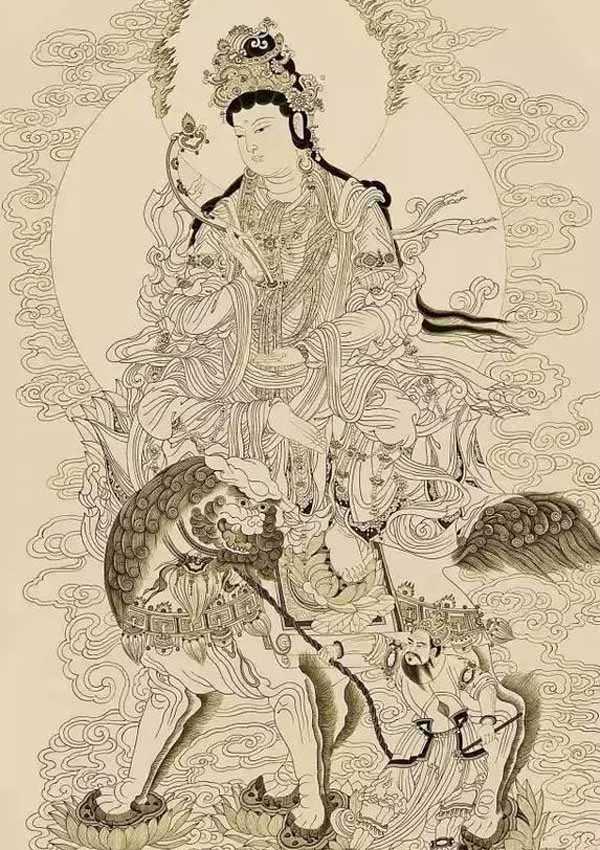
Hair Embroidery 'Buddha'
One of the defining characteristics of hair embroidery is its soft, silky texture and subtle sheen, which closely resembles the natural luster of human hair. This distinctive quality lends a tactile richness to the embroidery, inviting viewers to appreciate not only its visual beauty but also its tactile allure. Additionally, the use of hair as a medium imbues the embroidery with a sense of vitality and authenticity, as each strand carries with it a piece of the artisan's skill and creativity.
Hair embroidery finds expression in a myriad of designs, ranging from delicate floral motifs and graceful landscapes to intricate portraits and mythological scenes. Each embroidery piece is a testament to the artisan's mastery of technique and ability to evoke emotion and storytelling through their work. Whether depicting scenes from everyday life or capturing the essence of historical events, hair embroidery serves as a medium for artistic expression and cultural preservation.
Hair embroidery holds special cultural significance in China, symbolizing beauty, longevity, and prosperity. It is often used to create elaborate hair ornaments, jewelry, and decorative objects for weddings, festivals, and other celebratory occasions. Hair embroidery requires exceptional skill and patience, as artisans must carefully select and prepare the hair strands and master intricate stitching techniques to achieve lifelike results.
Despite the decline of traditional hair embroidery in modern times, efforts are being made to revitalize this ancient craft and preserve its cultural heritage. Artisans and cultural organizations are exploring innovative ways to incorporate hair embroidery into contemporary fashion, art, and design, ensuring that this unique form of embroidery continues to be cherished and celebrated for generations to come.
In conclusion, the rich tapestry of Chinese hand embroidery unfolds as a testament to the boundless creativity and unwavering dedication of artisans across generations. Within this intricate mosaic of techniques, materials, and traditions, Chinese embroidery emerges as a vibrant expression of the nation's cultural heritage and artistic prowess.
Across the diverse landscape of Chinese embroidery, from the luxurious silk threads to the intricate sparkle of beads, artisans weave together stories of tradition, innovation, and craftsmanship. Each medium, whether it be silk, cotton, gold and metallic threads, wool, beads, or hair, offers its own unique qualities and possibilities, inviting artisans to explore new realms of creativity and expression.
In every stitch, Chinese artisans honor the legacy of their ancestors, preserving ancient techniques and traditions while embracing innovation and modernity. Through their artistry, they breathe new life into age-old practices, ensuring that the timeless art of embroidery continues to thrive and inspire future generations.
As we marvel at the richness and diversity of Chinese embroidery art, we are reminded of its enduring significance as a symbol of cultural identity, artistic excellence, and human ingenuity. Across time and space, Chinese embroidery remains a source of fascination and admiration, weaving together the threads of tradition and innovation to create a legacy that transcends borders and spans generations.
by Su Embroidery Studio (SES), Suzhou China
SES is dedicated to Chinese Silk Embroidery Art and High-End Custom Embroidery
Find SES's embroidery work at Chinese Silk Embroidery for Sale.








